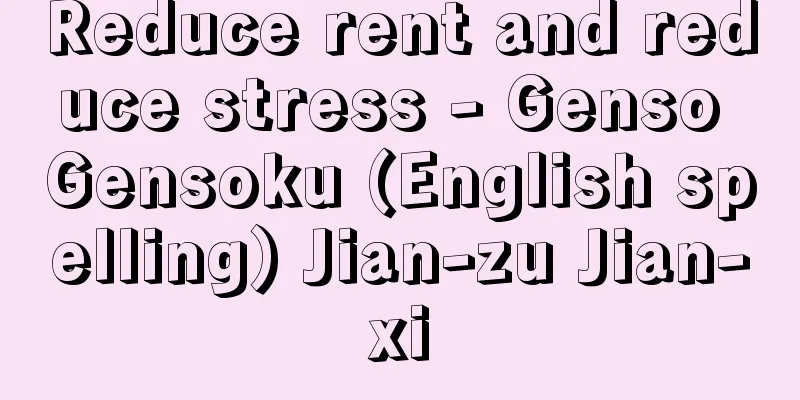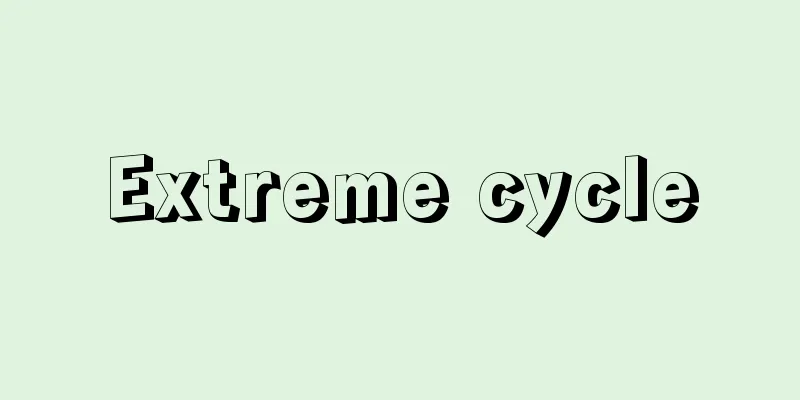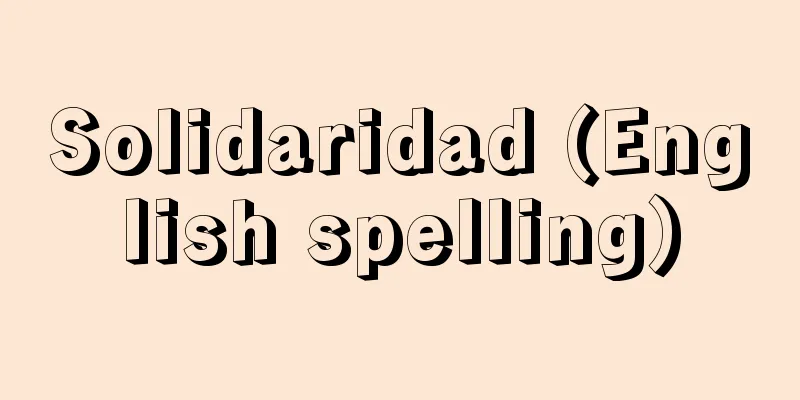Juvenile Classification Home - Shounen Kanbetsusho

|
A facility that accommodates and classifies those who have been sent under protective custody measures by the family court, provides necessary protective treatment for inmates, and provides assistance for preventing delinquency and crime in the local community. Classification here refers to clarifying the problematic circumstances in terms of quality and environment that influenced the delinquency or crime of the subject based on medical, psychological, educational, sociology, and other specialized knowledge and techniques, in order to contribute to the investigation and trial of juveniles conducted by the family court, and the execution of protective measures and sentences for juveniles under the age of 20 who have been sentenced to imprisonment or incarceration, and providing appropriate guidelines that contribute to the treatment of the subject to contribute to improving those circumstances. Classification can be divided into adjudication classification, which is conducted at the request of the family court, and treatment classification, which is conducted at the request of related institutions other than the family court, such as probation offices and child independence support facilities. Of these, adjudication classification is divided into detention adjudication classification, which is conducted on those who are detained in a juvenile classification home under protective measures, and in-home adjudication classification, which is conducted on those who are not detained. The juvenile's problems and the possibility of improvement are identified through interviews, investigation of documents such as upbringing and education history, psychological tests, psychiatric and physical medical diagnoses, behavioral observation, etc. The results of adjudication classification, which include a decision on in-home protection such as probation or detention protection such as sending to a juvenile training school, are sent to the family court and used as materials for the trial. If a decision is made to place the juvenile under probation or to send to a juvenile training school as a result of the trial, the results are sent to the probation office or the juvenile training school to be used as a reference for treatment. Juvenile classification homes are different from juvenile training schools, where juveniles are sent by final decision as a protective measure. The detention period is generally two weeks, with a maximum of eight weeks (if certain requirements are met for cases of juveniles committing crimes punishable by imprisonment or more), and they also function as detention centers for adults. They are based on the Juvenile Classification Homes Act (Act No. 59 of 2014), which came into force in June 2015. In the past, the old Juvenile Training School Act, enacted in 1948, contained only a few provisions regarding juvenile classification homes, but in consideration of the development of the functions of juvenile classification homes and the differences in the nature of juvenile training schools and juvenile classification homes, the Juvenile Classification Homes Act was enacted as an independent law in 2014. All of them are national facilities under the supervision of the Minister of Justice, and as of the end of May 2019, there were 52 such facilities (including six branch offices). In addition, juvenile classification homes also operate under the name "Legal Juvenile Support Centers," providing necessary information, advice, and other assistance when they receive consultations or requests regarding juveniles from ordinary families, schools, etc. [Akikazu Konishi March 18, 2020] "Suenaga Kiyoshi, '50 Years of Progress in Juvenile Classification Homes' (1999, Corrections Association)" ▽ "Ministry of Justice Corrections Bureau ed., 'Considering Family Ties -- From the Field at Juvenile Detention Centers and Juvenile Classification Homes' (1999, Ministry of Finance Printing Bureau)" ▽ "Ministry of Justice Corrections Bureau ed., 'The New Juvenile Detention Center Act and Juvenile Classification Home Act' (2014, Corrections Association)" ▽ "Ministry of Justice Corrections Bureau ed., 'When Children and Young People Change -- The Practice of Juvenile Detention Centers and Juvenile Classification Homes that Support and Guide Their Development and Recovery' (2018, Corrections Association)" [Reference] | |Source: Shogakukan Encyclopedia Nipponica About Encyclopedia Nipponica Information | Legend |
|
家庭裁判所の観護措置により送致された者を収容するなどして鑑別を行うほか、在所者に必要な観護処遇を行い、また地域社会における非行・犯罪の防止に関する援助を行う施設。ここでいう鑑別とは、家庭裁判所の行う少年に対する調査や審判、また保護処分の執行や懲役または禁錮の言渡しを受けた20歳未満の少年に対する刑の執行に資するため、医学、心理学、教育学、社会学その他の専門的知識・技術に基づいて、対象者の非行・犯罪に影響を及ぼした資質上・環境上問題となる事情を明らかにし、またその事情の改善に寄与するため対象者の処遇に資する適切な指針を示すものであるとされる。鑑別には、家庭裁判所の求めに応じて行われる審判鑑別と、保護観察所や児童自立支援施設など、家庭裁判所以外の関係機関の求めに応じて行われる処遇鑑別とがある。 このうち審判鑑別は、観護措置により少年鑑別所に収容されている者に対して行う収容審判鑑別と、収容されていない者に行う在宅審判鑑別とに分けられる。面接、生育・教育歴などの資料の調査、心理検査、精神および身体医学的診断、行動観察などにより、少年の問題性や改善可能性などが把握される。保護観察等の在宅保護、少年院送致等の収容保護などの判定を含む審判鑑別の結果は、家庭裁判所に送付され、審判の資料となる。審判の結果、保護観察や少年院送致の決定がなされた場合は、保護観察所や送致先の少年院に送付され、処遇の参考に供される。 少年鑑別所は、保護処分として終局決定により送致される少年院とは異なる。収容期間は原則として2週間、最長8週間(犯罪少年による禁錮以上の刑にあたる罪の事件で一定の要件を満たした場合)で、成人の場合の勾留(こうりゅう)の機能も果たす。2015年(平成27)6月施行の少年鑑別所法(平成26年法律第59号)に基づく。かつては1948年(昭和23)に制定された旧少年院法に少年鑑別所に関する規定がわずかに置かれていたのみであったが、少年鑑別所の機能の進展、少年院と少年鑑別所の性格の相違等にかんがみ、2014年に独立した法律として少年鑑別所法が定められた。すべて国立の施設で、法務大臣の管理下にあり、2019年(令和1)5月末の時点で、52庁(分所6庁を含む)を数える。なお、少年鑑別所では、「法務少年支援センター」といった名称のもとで、一般家庭や学校などから少年に関する相談や依頼を受けた場合に、必要な情報の提供、助言その他の援助も行っている。 [小西暁和 2020年3月18日] 『末永清著『少年鑑別所50年の歩み』(1999・矯正協会)』▽『法務省矯正局編『家族のきずなを考える――少年院・少年鑑別所の現場から』(1999・大蔵省印刷局)』▽『法務省矯正局編『新しい少年院法と少年鑑別所法』(2014・矯正協会)』▽『法務省矯正局編『子ども・若者が変わるとき――育ち・立ち直りを支え導く少年院・少年鑑別所の実践』(2018・矯正協会)』 [参照項目] | |出典 小学館 日本大百科全書(ニッポニカ)日本大百科全書(ニッポニカ)について 情報 | 凡例 |
<<: Children's Palace (English: Shào nián gōng)
>>: Juvenile detention center - Shounenin
Recommend
Takaishi [city] - Takaishi
A city in central Osaka Prefecture, facing Osaka B...
Tsuge [village] - Tsuge
A village in Yamabe County, northeastern Nara Pref...
Koliya tribe - Koliya (English spelling)
A tribe from the time of Buddha in India, the Koli...
Probus, Marcus Aurelius
[raw]? [Death] 282 Roman Emperor (reigned 276-282)...
Horse-theater - Umashibai
A tent performance where all the performers ride h...
Chancel (English spelling)
An architectural term, as opposed to the outer san...
Interview record with Ito Ritsu
...Hershel's activities are true, but the con...
Administrator (in English)
This is a type of account that can install any sof...
Macrinus, Marcus Opellius
[Birth] 164 years old. Mauretania [Died] June 218....
Diwali (English spelling)
A Hindu festival. It means "row of lamps.&quo...
Conjugation
In plants and fungi, gametes, gametangia, or somat...
The Living Theatre
An American theater company founded in 1947 by dir...
Kanzui - Kanzui
〘Name〙 Old name of the plant "Natsutoudai (Su...
Seiichiro Ikeno - Seiichiro Ikeno
A pioneer of plant morphology in Japan. Born into...
Anemone hortensis (English spelling)
…[Masao Yamashita]. … *Some of the terminology th...







![Toshima [village] - Toshima](/upload/images/67cc57726b0dd.webp)

